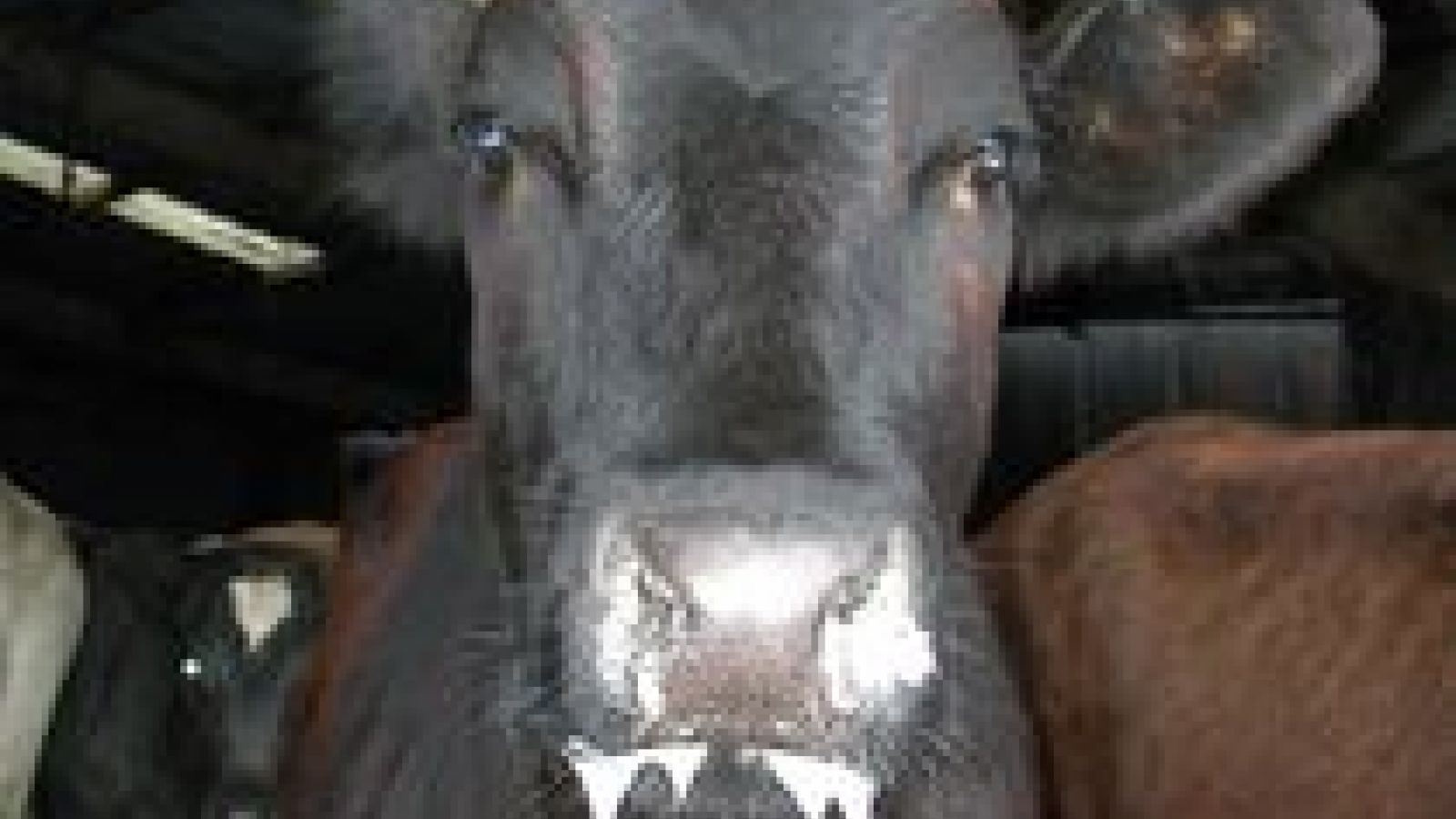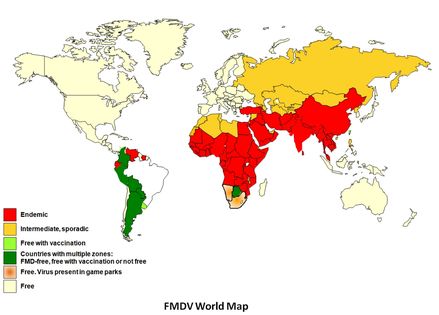
 Foot-and-mouth disease (Aphthae epizooticae) is an infectious and sometimes fatal viral disease that affects cloven-hoofed animals, including domestic and wild bovids such as cattle and sheep. The virus causes a high fever for two or three days, followed by blisters inside the mouth and on the feet that may rupture and cause lameness.
Foot-and-mouth disease (Aphthae epizooticae) is an infectious and sometimes fatal viral disease that affects cloven-hoofed animals, including domestic and wild bovids such as cattle and sheep. The virus causes a high fever for two or three days, followed by blisters inside the mouth and on the feet that may rupture and cause lameness.
Foot-and-mouth disease is highly infectious and can be spread by infected animals through aerosols, through contact with contaminated farming equipment or feed, and by domestic and wild predators.
Its containment demands considerable efforts in vaccination, strict monitoring, trade restrictions and quarantines, and occasionally the elimination of animals, as happened in the UK during the last outbreak here, where millions of animals were put down. Approximately 3 to 4 billion doses of vaccine are administered every year worldwide in an effort to control the disease.
 The current vaccine is made from attentuated live virus and this presents a danger of the virus reverting to the disease causing version. Live vaccine also requires cooling, making long-term storage and transport an issue in its use.
The current vaccine is made from attentuated live virus and this presents a danger of the virus reverting to the disease causing version. Live vaccine also requires cooling, making long-term storage and transport an issue in its use.
Now a new artificial vaccine based on a modified version of the foot-and-mouth virus protein coat offers temperature resistance and no threat of disease. This work is expected to have an impact on vaccine development against other viruses from the same family, such as polio and hand,foot and mouth. In the two animations here you can see the virus life-cycle and the vaccine production process.
Last edited: 29 July 2022 14:01



